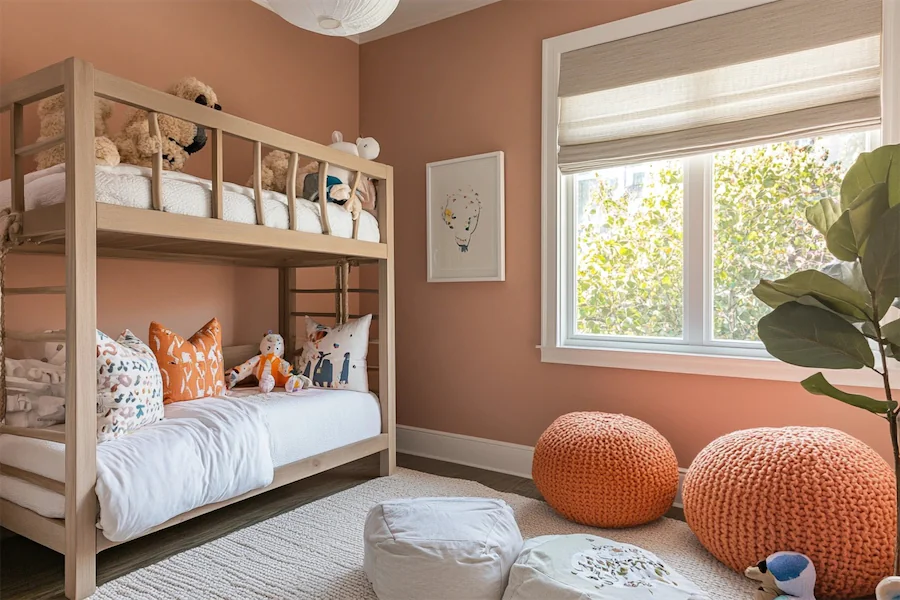Designing a child’s room with warm tones creates a cozy and inviting atmosphere, fostering comfort and relaxation. Warm colors like soft yellows, peach, coral, and earthy neutrals can make the space feel nurturing and cheerful.
History and Origins of Warm-Toned Decor
Warm colors have long been used in interior design to evoke feelings of warmth and comfort. In children’s rooms, these hues create a welcoming environment that can positively influence mood and behavior.
Key Features of a Warm-Toned Kid’s Room
- Color Palette: Incorporate shades like warm whites, soft yellows, peach, coral, and earthy tones to establish a soothing ambiance. These colors can be used on walls, furniture, and accessories to create a harmonious look.
- Natural Materials: Utilize materials such as wood, rattan, and wicker to enhance the warmth of the room. These elements add texture and a natural feel, contributing to a cozy environment.
- Layered Textiles: Incorporate soft fabrics like cotton, linen, and wool in bedding, curtains, and rugs to add depth and comfort to the space. Layering different textures can make the room feel more inviting.
Applications of Warm Tones in Children’s Rooms
- Wall Colors: Choose warm, neutral shades for the walls to create a calming backdrop. Colors like warm white or soft peach can make the room feel spacious and serene.
- Furniture: Select furniture pieces in natural wood tones or painted in warm hues to maintain the cohesive warm theme. This not only adds to the aesthetic but also brings a sense of durability and timelessness.
- Decorative Accents: Incorporate warm-colored accessories such as throw pillows, blankets, and artwork to add personality and charm to the room. These accents can be easily updated as the child grows.
Considerations When Designing a Warm-Toned Kid’s Room
- Balance: While warm tones are inviting, it’s essential to balance them with neutral or contrasting colors to prevent the space from feeling overwhelming. For instance, pairing warm hues with cooler accents like soft blues or greens can create a harmonious look.
- Lighting: Ensure the room has adequate lighting to enhance the warmth of the colors. Natural light works best, but incorporating soft, warm artificial lighting can also be effective.
- Personalization: Involve your child in the decorating process to incorporate elements that reflect their personality and interests, making the space uniquely theirs. This can include selecting favorite colors, themes, or decorative items.
Conclusion
Creating a warm-toned kid’s room combines aesthetic appeal with a nurturing environment, fostering a space where your child can thrive. By thoughtfully selecting colors, materials, and decor elements, you can design a room that is both stylish and comforting.
